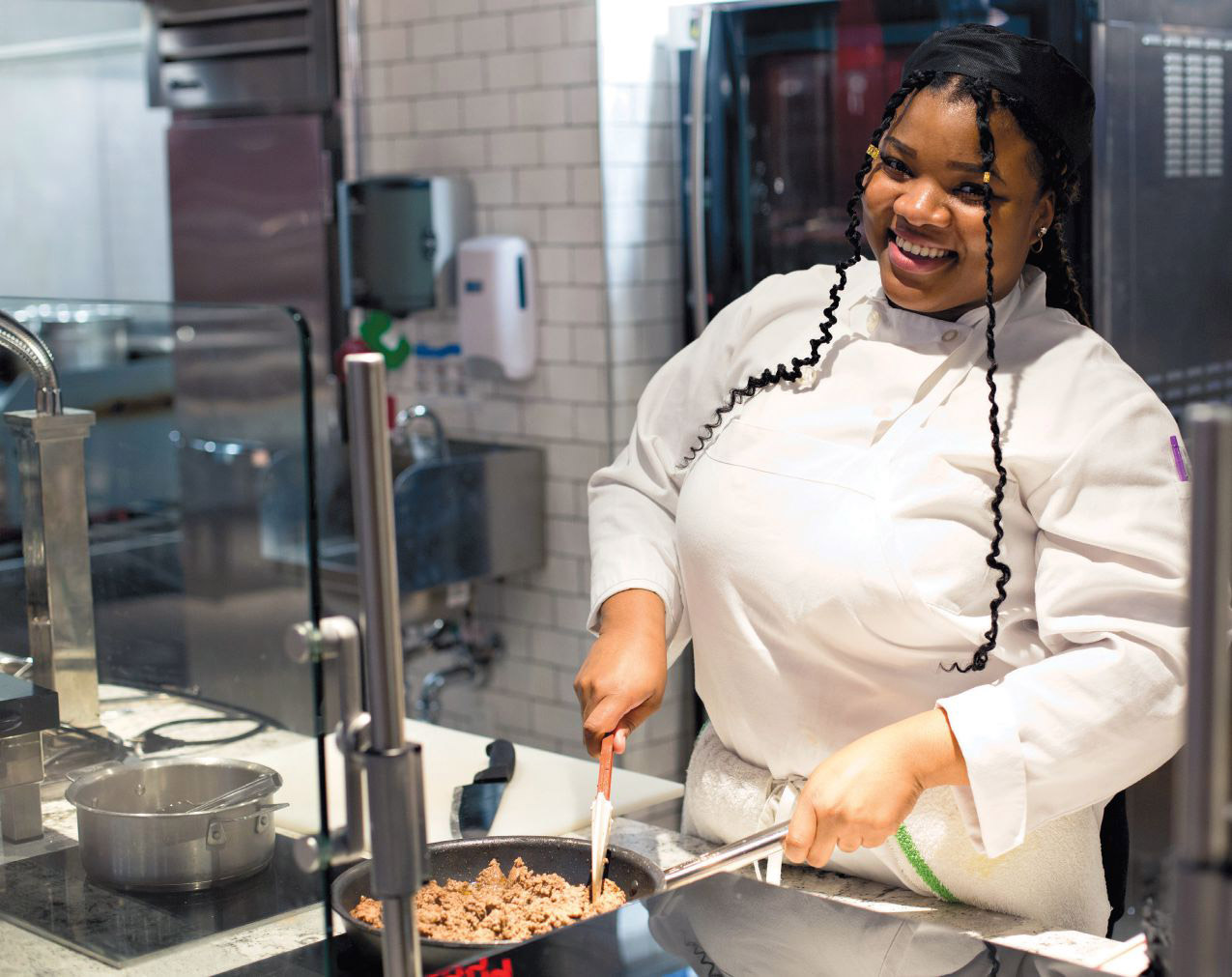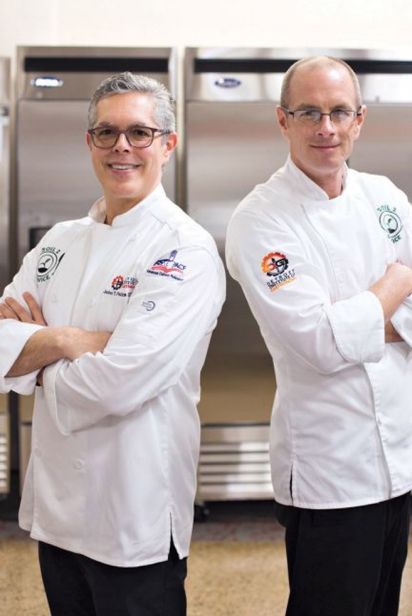Mentorship & Apprenticeship, Detroit’s Culinary School Disrupts the Traditional Model
The founders of the Detroit Institute of Gastronomy, John Piazza and Jeremy Abbey, also publish Edible Wow through their not-for-profit Soil2Service, which provides food education and experiences to improve communities, individuals and systems.
When chefs John Piazza and Jeremy Abbey decided to open a culinary school, they first had some candid conversations with their peers in the industry. The founders of the Detroit Institute of Gastronomy (DIG) wanted to know what chefs were really looking for in a culinary school graduate employee.
“Chefs always said things like ‘a graduate should be job-ready,’” says Piazza. “The ability to work under pressure and to work independently are key in determining cooking success. These aren’t things we can teach in a brick-and-mortar culinary school.”
So, the duo developed a hybrid two-year apprenticeship program. Students are connected with a mentor chef and employed in their kitchen, while learning theory online. After two years of academic theory and more than 4,000 hours of on-the-job learning, students emerge with an American Culinary Federation (ACF) certification and real-world work experience beyond just job readiness.
This program is designed to combine a traditional European apprenticeship with the standard United States curriculum. Courses cover the kind of theory you would expect in any culinary school—food preparation, baking fundamentals, menu planning and food systems—but the difference, say Piazza and Abbey, is how the theory plays out in the real world.
“If they are learning about a technique, then they are immediately able to put it into practice on the job, and then practice it over and over,” says Piazza. “The key to learning is repetition.”
The apprenticeship model allows for more flexibility, which Piazza and Abbey are fiercely proud of. Students “learn while they earn” in what Piazza describes as an “employee-first” program, and kitchens can teach staff new skills without sending them off to culinary school.
“Students never have to report to campus for a scheduled class in a 100% online curriculum, so they can devote themselves fully to their job and mentor,” says Piazza.
Course content is mobile-friendly.
“With technology these days, students can log in during their breaks and work on assignments on their mobile devices,” says Piazza.
In an industry that’s known for its “hop-around” staff patterns, the creators of DIG hope this style of education can provide more kitchen staff stability.
“There’s a ton of need for skilled hospitality staff,” says Abbey. “Detroit needs employees who are committed to the industry.”
Ensuring a quality placement for their students is a key factor as well. Restaurants have to meet the institute’s strict standards, including making all their dishes with at least 80% scratch-based processes, meaning they make almost everything starting from basic ingredients.
“They’re not going to go to a Coney Island restaurant to meet the requirements of this culinary program,” says Piazza.
One of the main benefits of a hybrid course like this is the ability to cater to nontraditional students.
“We get students right out of high school and we also get career-changers,” Piazza says.
Abbey agrees, adding that the demographics in the industry are changing. In the past 10 years he’s witnessed more inclusivity in the culinary world, and describes DIG’s student body as a 50/50 split between males and females.
“It’s really exciting to see those changes,” Abbey says. “Our pool is very diverse and there is not one demographic that dominates our pipeline.”
A’Lexis McKenzie is one of the students who is making the most of the program’s unique style. McKenzie started her DIG training last winter and works at the Players Club at Little Caesars Arena in downtown Detroit, creating dishes for the season ticket holders and sports alumni who frequent the games and events there.
She believes the combined experience and coursework model works well.
“You are still in a working environment,” McKenzie says. “It helps because you can visualize it every day.”
Known for her Seafood Mac ‘n’ Cheese, created with eight different cheeses, the chef says she enjoys experimenting with tastes. “I love to tackle anything,” she says.
As the first apprentice at the Players Club facility, McKenzie is familiar with paving her own path and wants to go on to develop her own culinary business, something she believes DIG is giving her the tools to do.
“I wish this [program] was available to me earlier,” she says.
As a young institute, DIG faces the same challenges many culinary schools do, with students struggling to meet (or understand the value of) the financial commitment to culinary education.
“It’s an investment in yourself,” says Abbey. “So, we are working on ways to explain and demonstrate it.” There are multiple scholarships and grants available to DIG students to help offset the cost of the program.
Trevor Pollock was one of DIG’s first apprentices, and he now works with Chef Jason Strotheide at Michigan State University (MSU). Pollock describes the DIG training program as “an eye-opener” for him, despite already having a lot of experience in the field.
“Between the DIG’s curriculum, ACF’s learning center and Chef Jason’s mentorship, I have been able to learn so much more,” says Pollock. “I have been exposed to many new techniques, methods and a broadened mentality of food preparation.”
Detroit Institute of Gastronomy
DetroitGastronomy.org






